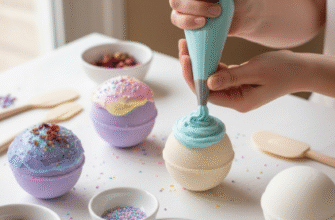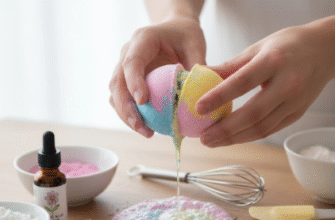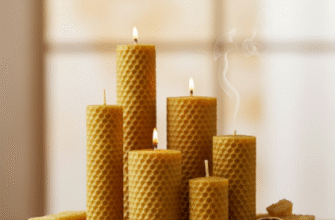Feeling frazzled? Overwhelmed? Like the world is spinning just a little too fast? Sometimes, hitting pause isn’t a luxury, it’s a necessity. But carving out time and budget for a professional spa visit can feel like another task on an already overflowing list. Good news: you can cultivate that blissful oasis of calm right within your own walls. Creating a rejuvenating spa day at home is easier than you think, requiring just a little preparation and the right supplies. Forget the commute and the hefty price tag; let’s transform your space into a personal sanctuary.
This checklist is your guide to gathering everything you need for a truly restorative experience. Remember, this is your time. Tailor it to what makes you feel good, skip what doesn’t resonate, and focus purely on unwinding and recharging your batteries. Let’s begin!
Setting the Serene Scene: Atmosphere is Key
Before you even think about lotions and potions, create the right environment. You can’t fully relax in a chaotic space. This step is crucial for shifting your mindset from ‘everyday life’ to ‘spa retreat’.
Declutter Your Chosen Space
Pick the room where you’ll spend most of your spa time – likely the bathroom, perhaps extending into the bedroom. Clear away the clutter. Put away laundry, tidy countertops, remove unnecessary items. A visually calm space translates to a calmer mind. You don’t need to deep clean the entire house, just the zone dedicated to your relaxation.
Master the Lighting
Harsh overhead lights are the enemy of relaxation. Opt for soft, warm lighting. Dim the lights if possible. Candles are a spa staple for a reason – their flickering glow is instantly calming. Choose scents you love, but even unscented pillar candles work wonders. Battery-operated LED candles are a great flame-free alternative if you prefer.
Curate the Soundscape
What sounds soothe you? Silence might be golden for some. Others might prefer calming instrumental music, gentle nature sounds (like rainfall or ocean waves), or even a guided meditation. Prepare a playlist in advance so you’re not fiddling with devices mid-relaxation. Ensure your phone notifications are silenced – this is about disconnecting.
Engage the Sense of Smell
Aromatherapy plays a huge role in setting a spa mood. Essential oil diffusers are fantastic for dispersing calming scents like lavender, chamomile, bergamot, or sandalwood. Alternatively, scented candles or incense can work beautifully. Even a few drops of essential oil on a tissue placed nearby can subtly fragrance the air. If using bath products, their scent will also contribute to the overall aromatic experience.
The Pampering Arsenal: Body Care Essentials
Now for the hands-on pampering! This is where you treat your body to some well-deserved TLC.
Bath or Shower Bliss
Whether you’re a bath lover or a shower devotee, elevate the experience.
- For Baths: Gather bath bombs (fizzy fun and fragrance), Epsom salts (great for muscle tension), bath oils (for silky smooth skin), or bubble bath (for pure indulgence).
- For Showers: Use a shower steamer – like a bath bomb for your shower, releasing essential oils into the steam. Choose a luxurious shower gel or cream with a scent you adore.
Cleansing and Exfoliating
Wash away the day’s stresses. Use a gentle, hydrating body wash. Follow up with a body scrub to slough away dead skin cells, revealing brighter, smoother skin underneath. You can use a store-bought scrub or even a simple DIY mix of sugar or salt with a carrier oil (like coconut or olive oil). A soft loofah, washcloth, or body brush can enhance the cleansing process.
The Sacred Soak (If Bathing)
Ensure your bath water is comfortably warm, not scalding hot. Aim for a soak of around 15-20 minutes. This is prime time for relaxing – close your eyes, listen to your music, just be present.
Hydration Station
After your bath or shower, gently pat your skin dry with a soft, fluffy towel (bonus points if it’s warm!). While your skin is still slightly damp, apply a generous amount of moisturizer. Choose based on your preference: a light lotion, a rich body butter, or a nourishing body oil. Massage it in slowly, paying attention to drier areas like elbows and knees.
Patch Test Advisory: Trying new skincare products during your spa day? Always perform a patch test first! Apply a small amount to an inconspicuous area (like your inner wrist or elbow) 24 hours beforehand. This helps ensure you won’t have an unexpected reaction when you’re trying to relax.
Face Forward: Facial Treatment Must-Haves
Your face deserves special attention. A mini-facial can leave your skin glowing and refreshed.
Gentle Cleansing
Start by removing any makeup and cleansing your face with a gentle facial cleanser suited to your skin type. Use lukewarm water.
Smooth Moves: Exfoliation
Use a mild facial exfoliant – either a physical scrub with fine particles or a gentle chemical exfoliant (like one with AHAs or BHAs, if your skin is used to them). Don’t scrub too hard; let the product do the work. This step helps remove dead skin cells and allows subsequent products to penetrate better.
Mask Magic
This is often the centerpiece of an at-home facial. Choose a mask based on your skin’s needs:
- Clay Masks: Good for absorbing excess oil and purifying pores (great for oily/combination skin).
- Sheet Masks: Packed with serums for hydration, brightening, or calming. Easy and mess-free.
- Cream/Gel Masks: Often focused on hydration and soothing (ideal for dry or sensitive skin).
Apply your chosen mask, then lie back and relax for the duration specified on the product packaging (usually 10-20 minutes). Use this time for meditation or simply resting your eyes. Cucumbers slices over the eyes are optional but classic!
Tone and Balance
After removing your mask, spritz on a facial toner or mist. This helps rebalance your skin’s pH and can provide an extra layer of hydration. Pat it gently into the skin.
Seal the Deal: Moisturize
Finish your facial routine by applying your usual serums, eye cream, and a good facial moisturizer. Gently massage the products in using upward strokes.
Hair Revival: Tresses Treatment
Don’t forget your hair! A little extra care can leave it feeling soft and looking shiny.
Deep Conditioning Delight
Apply a deep conditioning treatment or hair mask from mid-lengths to ends. You can wrap your hair in a warm towel or a shower cap to help the product penetrate better. Leave it on for the recommended time (often coinciding nicely with your face mask or bath soak time) before rinsing thoroughly.
Scalp Serenity
While the mask is working, or even just during your shampoo phase, give yourself a gentle scalp massage using your fingertips. This not only feels amazing but can help stimulate circulation.
Happy Hands and Feet: Finishing Touches
Often neglected, our hands and feet work hard and deserve some pampering too.
Soak and Soften
Soak your feet (and hands, if you like) in a basin of warm water. Add Epsom salts or a few drops of essential oil if desired. Soak for about 10-15 minutes to soften the skin.
Exfoliate and Smooth
Use a foot file or pumice stone on rough areas of your feet (heels, calluses). Use a gentle scrub on both hands and feet to exfoliate dead skin.
Nail Nurturing
Gently push back cuticles (don’t cut them unless you’re experienced). File and shape your nails. Buff them for a natural shine or apply a coat of clear strengthening polish. Apply cuticle oil for extra nourishment.
Moisture Lock
Massage a rich hand cream into your hands and a dedicated foot cream onto your feet. For an intensive treatment, apply cream generously and wear cotton gloves or socks for a while (or even overnight).
Optional Colour Pop
If you enjoy it, apply your favourite nail polish. Allow ample drying time – no rushing!
Comfort is Non-Negotiable: The Cozy Extras
These items enhance the overall spa experience and maximize your comfort.
- Plush Robe and Slippers: Swaddle yourself in softness. A comfortable robe and cozy slippers are essential spa attire.
- Fluffy Towels: Have plenty of clean, soft towels ready. Warming them slightly on a radiator or in the dryer beforehand adds a touch of luxury.
- Hydrating Beverages: Sip on something calming. Infused water (with cucumber, lemon, or mint), herbal tea (chamomile, peppermint), or just plain water are perfect. Avoid caffeine and alcohol.
- Light Snacks: If you get peckish, have some light, healthy snacks on hand like fresh fruit, nuts, or yogurt. Avoid heavy meals.
- Entertainment (Optional): A light magazine, a book, or simply enjoying the peace and quiet. The goal is relaxation, not intense concentration.
Bringing It All Together: Your Spa Day Flow
There’s no single right way to structure your home spa day, but here’s a possible flow:
- Set the Mood: Dim lights, light candles/start diffuser, put on music, silence phone.
- Start with a Soak/Steam: Begin with your bath or shower, perhaps incorporating a body scrub.
- Hair & Face Mask Time: Apply your hair mask and face mask concurrently while relaxing (perhaps during the bath or just after).
- Rinse & Cleanse Face: Rinse off masks, cleanse face thoroughly.
- Body Moisturizing: Pat skin dry and apply body lotion/butter/oil.
- Facial Routine: Apply toner, serum, eye cream, moisturizer.
- Hand & Foot Care: Do your mini mani/pedi.
- Get Cozy: Put on your robe and slippers.
- Relax & Hydrate: Sip your drink, nibble snacks, read, meditate, or just *be*.
The most important instruction? Listen to your body and mind. If you only have time or energy for a luxurious bath and some moisturizing, that’s perfect. If you want the full head-to-toe experience, go for it. The goal is to emerge feeling calmer, refreshed, and more centered than when you started.
Creating a spa day at home isn’t about achieving perfection; it’s about intentional relaxation and self-care. It’s a powerful reminder that you deserve moments of peace and pampering, readily available whenever you need them most. Gather your supplies, carve out the time, and give yourself the gift of rejuvenation. You’ve earned it.








